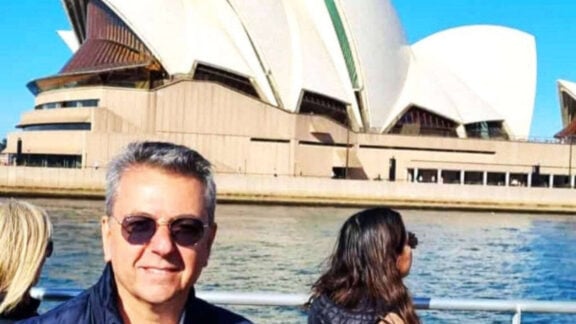Kozani, a region of Northern Greece that flourished during the Hellinistic period, is an area that hides significant historical sites where an intact Hellenistic tomb containing the skeleton of a female and several artefacts was unearthed at the Mavropigi site.
This magnificent find came to light during excavation works at a PPC lignite mine, according to the local archaeological service bureau (Kozani Ephorate), the burrow-like tomb is dated roughly at the end of the first century BC, the first estimation made based on the numerous funeral offerings.
The adorned body of the deceased woman with a gold leaf in her mouth was located on a bronze funeral bed in excellent condition on a north-south axis 1.5 metres beneath the site where a home was recently demolished as part of mining work in the village of Mavropigi. The woman’s remains were taken to the Archaeological Museum of Aiani, where they will be examined to ascertain her age and even the cause of death.
“We’re dealing with a rich woman or someone who held an important position in the society of the time,” noted Areti Chondrogianni-Metoki, director of the Kozani Ephorate of Antiquities.
ALSO READ: New prehistoric and Classical Era discoveries unearthed on Greek islands

BRONZE AGE UNLOOTED TOMBS IN NEMEA
Greece’s Culture Ministry says two intact chamber tombs dating from 1400 to 1200 BC have been unearthed near the southern town of Nemea at a site already known for its cluster of tombs, most of which had been looted before their discovery.
The newly found tombs include two full burials and bones from 14 individuals whose remains had been transferred from other tombs.
Excavation at the Aidonia burial site began in the late 1970s after the site containing tombs from 1700-1100 BC had already been extensively looted, probably in 1976-77.
Findings included a trove of ancient jewellery. Several items of jewellery that appeared in a 1993 auction in New York turned out to be from the same site and were subsequently returned to Greece.

The Aidonia burial site in southern Greece. Photo: Ephorate of Antiquities

The Aidonia burial site in southern Greece. Photo: Ephorate of Antiquities

The Aidonia burial site in southern Greece. Photo: Ephorate of Antiquities
ARCHAIC PERIOD TEMPLES ON DESPOTIKO ISLAND
Earlier this year we saw the unearthing of the Apollo temple on the uninhabited island of Despotiko, west of Antiparos following research that commenced 20 years ago. Further excavation works on the isle focusing on the surrounding areas of the temple and the nearby islet of Tsimintiri revealed five large buildings under dense vegetation.
“This year’s excavation focused on the areas surrounding the main temple and Buildings Z and R,” the Ministry of Culture said in a statement on Monday, according to ANA News Agency.
“The results of the season were particularly illuminating in terms of topography and how the ancient temple was laid out,” it added, while the principal findings so far are the Apollo sanctuary and surrounding buildings, along with many antiquities, all dating from the archaic period.

Findings in Despotiko. Photo: Ephorate of Antiquities

Findings in Despotiko. Photo: Ephorate of Antiquities

Findings in Despotiko. Photo: Ephorate of Antiquities

Findings in Despotiko. Photo: Ephorate of Antiquities

Findings in Despotiko. Photo: Ephorate of Antiquities

Findings in Despotiko. Photo: Ephorate of Antiquities

Findings in Despotiko. Photo: Ephorate of Antiquities
Last year’s excavation concentrated on areas around the sanctuary and Buildings Z and Eastern Complex 4, while research on Building P has been completed. In the future, archaeologists will also focus on buildings E and T. Considerable attention was also given to Building G and early nearby construction Building Y.
The overall search unearthed numerous ceramic artefacts of the archaic and classical periods — objects such as vases, basins, bottles, lamps, pots and amphorae. Metallic objects were also found, all estimated to date to the 6th century BC. Inside the room researchers located — in their original position — a quadrilateral grid and a cooking pot. In addition, earlier floors were revealed in many areas and the thresholds of the original entrances that had been sealed were detected.
This year’s excavations were funded by Athanasios and Marina Martinou, the Levendis, Kanellopoulos and Latsis Foundations, and the College Year in Athens/DIKEMES.









